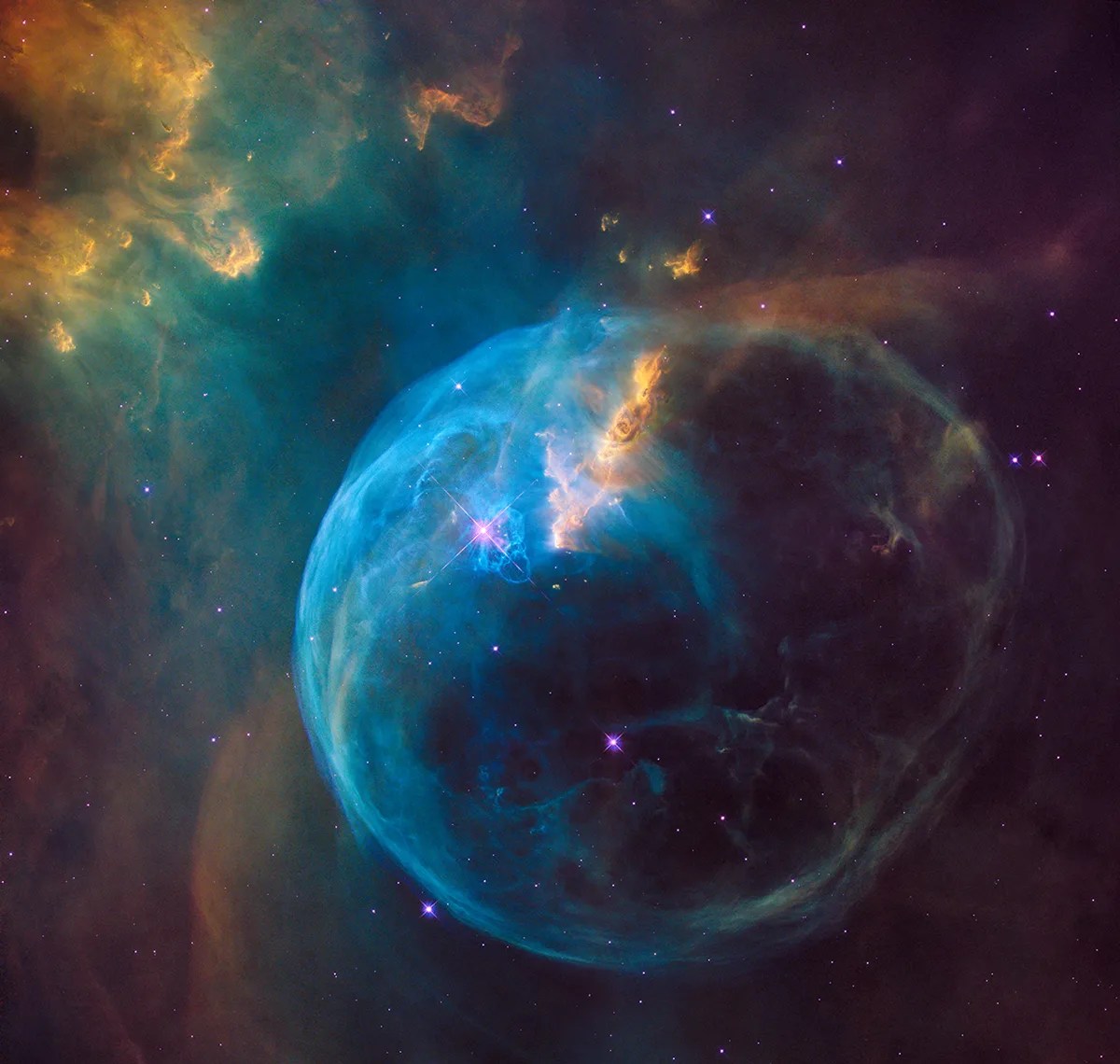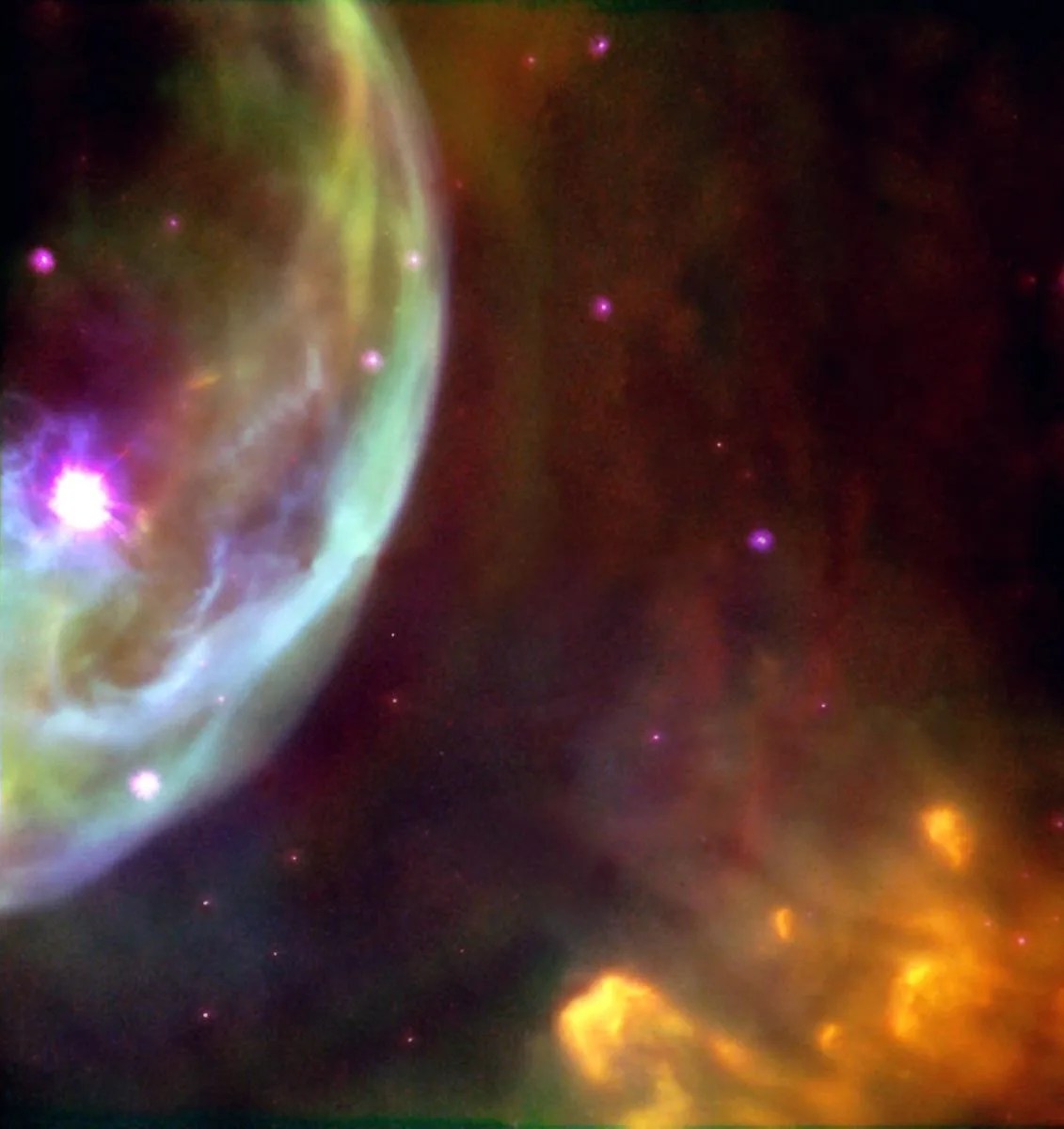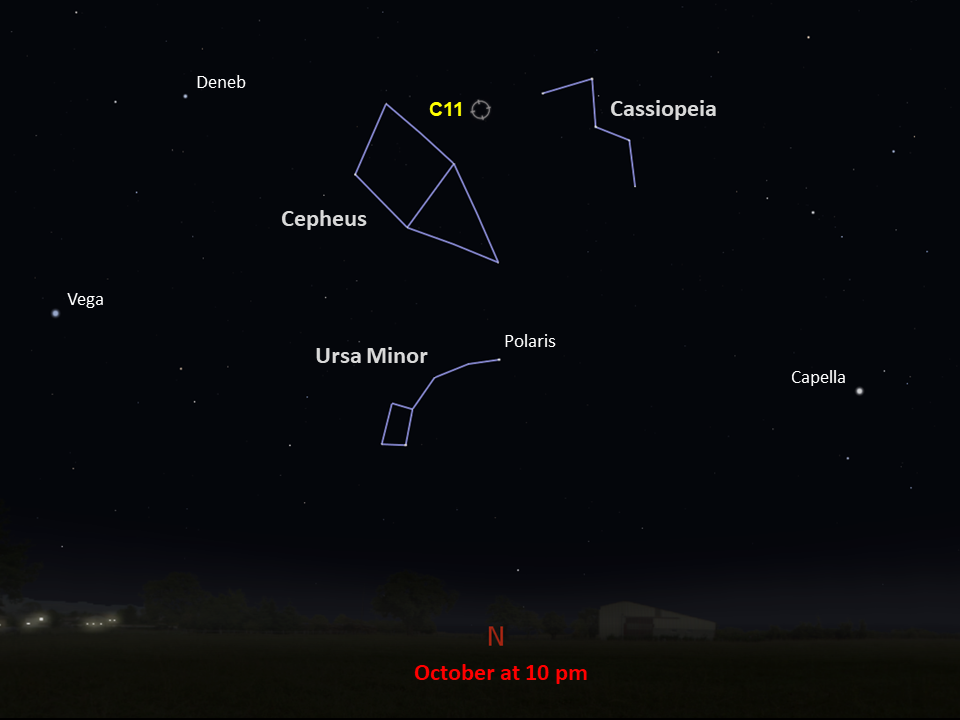Caldwell 11
Better known as the Bubble Nebula, Caldwell 11 is a colorful region of gas and dust that stretches 6 light-years across.
Distance
7,000 light-years
Apparent Magnitude
8.7
constellation
Cassiopeia
object type
Emission Nebula

This incredible image shows a bubble floating serenely against a muddy celestial background, forming object number 11 in the Caldwell catalog, more popularly known as the Bubble Nebula. Caldwell 11 is an emission nebula — a cloud of gas that gives off its own light — and actually includes not just the bubble but all the gas surrounding it as well. Stars shine throughout the field like specks of glitter, adding to the nebula’s stunning composition.

Also known as NGC 7635, the Bubble Nebula stretches 6 light-years across and is located roughly 7,000 light-years away. Within this bubble lies a magnitude-8.7, 15-solar-mass star — the creator of the glowing orb around it. A long time ago, the star began blowing a hole in the surrounding gas and dust of Caldwell 11 through radiation pressure to form the bubble shape, which has grown over time.
Caldwell 11’s bubble can be thought of as a continuously receding shock wave emanating from that star, which is positioned in the upper left of the bubble. The star’s stellar wind reaches 4 million miles per hour, carrying particles from the star’s surface and helping to propel the “shock wave” outward. The result ends up looking something like a planetary nebula, in which a star’s outer layers expand outward, but it is in fact gas and dust from the surrounding nebula that’s being pushed away from the star. This surrounding material is more dense to one side of the star, so the stellar wind meets greater resistance and progresses less in that direction, offsetting the central star from the geometric center of the bubble.
Caldwell 11 was discovered by astronomer William Herschel in November of 1787. This was a busy year for Herschel, during which he also found two moons orbiting Uranus: Titania and Oberon. Just a few years prior, he had discovered the planet Uranus itself and had subsequently been appointed Court Astronomer by King George III, undoubtedly a perk to go along with his sudden fame. Herschel made significant progress in the world of astronomy, identifying and cataloging 2,500 nebulae and star clusters during his career — among them many of the objects later collected in the Caldwell catalog.
The best time to view Caldwell 11 from the Northern Hemisphere is in the autumn. Those in the Southern Hemisphere will need to be near the equator to see it, and should look low in the northern sky during spring. The 10th-magnitude nebula resides in the constellation Cassiopeia, which is recognizable by its characteristic connect-the-dots version of a large “W” in the sky. To best observe it, use a large telescope equipped with a light-pollution filter to increase the contrast and spot some of the finer features of this nebula, which appears as a dim, diffuse, oval patch of light.
This image of Caldwell 11 was captured by Hubble’s Wide Field Camera 3. The colors reveal different elements: blue for oxygen, green for hydrogen, and red for nitrogen. Hubble’s high-resolution observations of the Bubble Nebula, taken with multiple instruments over the telescope’s lifetime, have helped astronomers better understand the geometry and dynamics of this complicated system.
For more information about Hubble’s observations of Caldwell 11, see:
Hubble Sees a Star ‘Inflating’ a Giant Bubble
The Bubble Nebula, NGC 7635
An Expanding Bubble in Space
NASA, ESA, and F. Summers, G. Bacon, Z. Levay, and L. Frattare (Viz 3D Team, STScI); Acknowledgment: T. Rector/University of Alaska Anchorage, H. Schweiker/WIYN, and NOAO/AURA/NSF, NASA, ESA, and the Hubble Heritage Team (STScI/AURA)

Glossary
Emission Nebula - A cloud of ionized gas that emits energy at wavelengths across the electromagnetic spectrum, causing it to glow with vibrant colors.
Magnitude - The brightness of an astronomical object, represented by a number; bright objects have low numbers on the magnitude scale, while dim objects have high numbers.
Planetary Nebula - An expanding shell of gas around an aging or dying Sun-like star, cast off by the star.
Explore Hubble's Caldwell Catalog
The following pages contain some of Hubble’s best images of Caldwell objects.

Caldwell 1
Also known as NGC 188, this group of stars formed from a large cloud of gas making the stars roughly…

Caldwell 2
This shell of gas is expanding outward, away from the dying star within.

Caldwell 3
This barred spiral galaxy was first spotted by British astronomer William Herschel in April 1793 in the constellation Draco.




